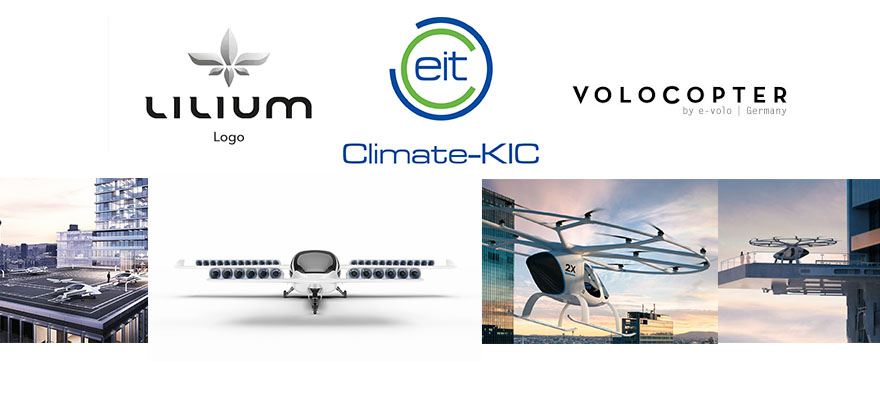The EIT Community takes to the skies

The world may still rely on fossil fuels, but that will have to end at some point.
When it does, how will people get around?
The EIT Community has been hard at work to address the challenge of sustainable transport. In recent months we've seen two incredible successes; terrific advances in the future of flying.
Lilium
First up was the world's first zero-emissions electric plane, developed by Lilium, a start-up supported by EIT Climate-KIC, that first took off in April 2017.
The world's first zero-emissions electric plane; a quite incredible feat. The plane enables you to travel five times faster than a car by introducing the world’s first all-electric vertical take-off and landing jet: an air taxi for up to five people.
The Lilium Jet consists of a rigid winged body with 12 flaps. Each one carries three electric jet engines. Depending on the flight mode, the flaps tilt from a vertical into a horizontal position. At take-off, all flaps are tilted vertical, so that the engines can lift the aircraft. Once airborne, the flaps gradually tilt into a horizontal position, leading the aircraft to accelerate. When they have reached complete horizontal position, all lift necessary to stay aloft is provided by the wings as on a conventional airplane.How will you be able to afford one? You won’t have to; Lilium's idea is that you will simply pay per ride and call it with a push of a button. Lilium's mission is to make air taxis available to everyone and as affordable as driving a car.
Want to see it for yourself? Watch the video below.
Volocopter
As if that weren't enough, along comes the Volocopter, a vertical take-off and landing (VTOL) electric vehicle also support by EIT Climate-KIC. The Volocopter team broke a crowd-funding record in 2013, raising EUR 1.2m, providing enough finance to turn it from prototype to production.
Recently, the team secured a USD 30m (EUR 25m) investment from a consortium including German car maker Daimler for its fully electric helicopter.
The Volocopter 2X model is a fully electric VTOL with 18 rotors powered by 9 independent batteries. It has a maximum airspeed of 100 kilometres (62 miles) per hour, and can transport two passengers without a pilot. However, it can be piloted as a normal helicopter too.
The innovators behind the Volocopter are already working with the Dubai transport authorities on using it as an Automomous Air Taxi (AAT). This would enable up to two passengers to quickly travel around the urban landscape in three dimensions. First operational tests are expected to be carried out later in 2017.
More to transport than flying machines...
But the skies are not the only place where the EIT Community is working to improve how we get around. In 2018, the EIT will launch a competition for two new Innovation Communities: EIT Urban Mobility and EIT Manufacturing.
EIT Urban Mobility will focus on smart, green and integrated transport. Who doesn't want that? Read more about the competition here. If you are interested in being a part of the Innovation Community that will work on this theme, you should join our webinar on 6 September.
Catch up with the latest news from the EIT Community in the Newsroom.
Subscribe to the EIT Newsletter to get the best of the EIT Community's news in your inbox once each month.


 Share this page
Share this page


